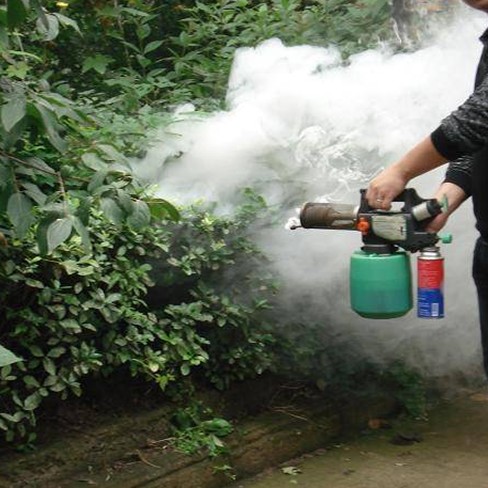
Mosquitoes belong to the same group as the true flies, Diptera. As such, they have a single pair of wings. They typically have long, thin legs and a head featuring a prominent proboscis. Mosquito bodies and wings most often are covered in tiny scales. Adult sizes may range from 3 to 9 mm.
Behavior, Diet & Habits
Mosquitoes are best known for the habits of the adult females which often feed on blood to help generate their eggs. The lesser-known side is that mosquito adults, males and females, also feed on nectar from flowers. Their immature stages usually are located in standing, preferably stagnant, water. The larvae feed on variety of materials, depending on species. Most consume organic flotsam and tiny aquatic organisms. However, some species are predatory and will consume other mosquitoes. Adult mosquitoes prefer to be most active from dusk until dawn but can become active with sufficient cloud cover or in dark shady areas. They do not prefer to be active in the sunshine since they may desiccate and die.
Mosquitoes can be confused with flies. Mosquitoes have long legs, and a long proboscis or “nose†that female mosquitoes use to “bite†people and pets to draw blood, needed to lay eggs. Most flies won’t bite and even long-legged flies are usually much smaller than mosquitoes. Mosquitoes are pesky pests and can spread disease such as West Nile Virus, dengue and malaria. More commonly, though, mosquitoes threaten family events more than health.
Males have feathery antennae they use to locate females. After mating, females typically seek a blood meal to aid in egg production. She often lays them in standing pools of water, but manmade sources can include bird baths, buckets and even mud puddles. Egg numbers vary from species to species but can be as much as over 100 eggs in a single laying. Wormlike larvae, called wigglers because of their wiggling swimming motion, hatch. They feed until ready to molt into pupae. The pupae are called tumblers, again due to their tumbling motion in the water. Adults emerge from the pupae onto the water surface where their exoskeleton hardens.
Difference between male and female mosquitoes
Most of the differences between male and female mosquitoes are hard to see without using a magnifying glass or a dissecting microscope. However, other differences are fairly easy to see if you know what you’re looking for. Differences between male and female mosquitoes include
Male adult mosquitoes do not take blood meals, while the females do. However, a few species of female adult mosquitoes do not imbibe blood at all and feed only on plant nectar and other sugars, just like the males. The mosquito’s proboscis that extends out from the mouth area is relatively smooth with the females and somewhat bushy with males.
The hairs or plumes on the mosquitoes’ antenna assist with the ability to hear. The male’s antennae plumes are very “feathery†and large, while the female’s antennae have a smoother, less feathery appearance.
Generally, male mosquitoes are smaller than females of the same species and live shorter lives than the females.